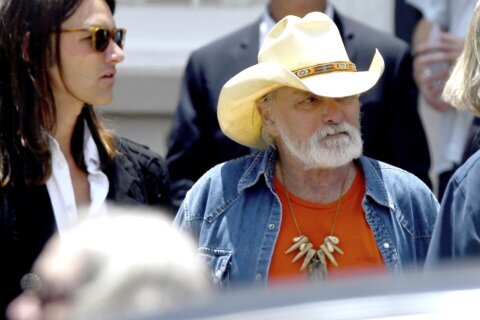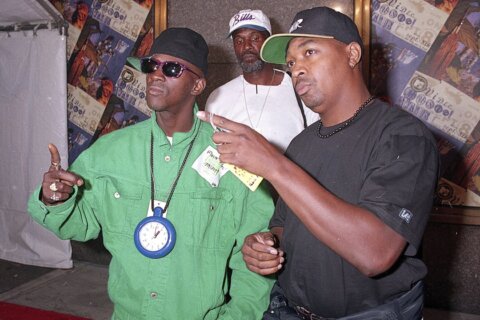American filmmaking doesn’t get more powerful than Martin Scorsese’s boxing biopic “Raging Bull” (1980) or Steven Spielberg’s Holocaust epic “Schindler’s List” (1993).
Director Barry Levinson combines both in the new film “The Survivor,” which premiered at the Toronto International Film Festival where it was bought by HBO and finally drops next Wednesday timed with Yom HaShoah, Israel’s version of Holocaust Remembrance Day.
The premise recalls Robert M. Young’s “Triumph of the Spirit” (1989), which followed a Jewish boxer (Willem Dafoe) who splits from his girlfriend when their families are sent to the Auschwitz concentration camp where Nazis force him to participate in boxing matches.
In “The Survivor,” screenwriter Justine Juel Gillmer follows Polish native Harry Haft, who is split from his girlfriend and forced to box at Auschwitz in a literal fight for survival. After the war, he moves to America as a professional light heavyweight boxer from 1948 to 1949, only to hang up his gloves to sell produce in Brooklyn in an attempt to be a family man.
Ben Foster gives a tour-de-force performance, rivaling his best work in the modern crime western “Hell or High Water” (2016). Foster is unrecognizable as an emaciated Auschwitz prisoner before trading his scrawny frame for punch-drunk pounds the way that Robert De Niro famously did in his all-timer Oscar-winning portrait of Jake LaMotta in “Raging Bull.”
Here’s hoping Foster is remembered come Oscar season, which I sadly doubt after seeing how Hugh Jackman was categorized for HBO’s “Bad Education.” Can we finally scrap the outdated notion of “made-for-TV movies” in our new streaming era? Serialized content deserves Emmys, while self-contained work deserves Oscars (like Foster here).
His in-ring brutality is countered by raw vulnerability outside the ring, a burden shouldered by wife Miriam Wofsoniker (Vicky Krieps, “Phantom Thread”), who bears the weight of his PTSD triggers from fireworks to peepholes. Even heavier is his lifelong torch for his pre-Holocaust flame, leaving his wife to piece together the trauma of her haunted husband.
More puzzle pieces come from reporter Emory Anderson (Peter Sarsgaard), who probes his Auschwitz boxing. “I was a trained dog,” Harry says. Emory replies, “Even a beaten dog loves his master,” sparking chokehold exposition: “I’m sorry! That is the sweet spot of a true story, the crack and the common ground between good and evil, Nazi and Jew.”
Enter flashbacks of Harry’s Nazi boxing “manager” Dietrich Schneider (Billy Magnussen), who slips in and out of English with a German accent for the benefit of the audience as these movies too often do. Such roles will always pale to Ralph Fiennes’ Amon Goeth, but he’s certainly evil, shooting the losers in the ring as Auschwitz inmates brawl to survive.
Far more nurturing are Harry’s post-war trainer (John Leguizamo) and Rocky Marciano’s trainer Charley Goldman (Danny DeVito), who gives Harry tips out of Polish kinship: “My real name is Israel. Don’t tell nobody.” He inspects Harry’s Auschwitz tattoo (“Never seen one up close”) before setting the stakes: “You can’t win. All you can do is survive.”
This seems to be setting our expectations for a “going the distance” climax like “Rocky” (1976), but the big match with Marciano oddly comes at the film’s midpoint. We spend the entire second half of the movie watching Harry in retirement, as opposed to LaMotta’s fight against Sugar Ray Robinson 2/3 the way through “Raging Bull” with Act 3 in retirement.
It’s just one way that the (often beautiful) script spars with itself in its structure. Viewers may feel that it jumps around in time too much, inserting flashbacks out of chronological order. I suppose that’s how PTSD works in real life, a random array of memories triggered by real-time events, but the viewing experience becomes a bit jumbled in the process.
Unlike “Raging Bull,” Levinson shifts between color for present day and black-and-white for flashbacks. The color palette of burgundy boxing gloves recalls Ron Howard’s inspirational “Cinderella Man” (2005), while the popping flashbulbs from ringside photographers cement Scorsese’s legacy, albeit without the New Wave cutting style of Thelma Schoonmaker.
Even so, Levinson shows flashes of the “sweet science” of directing, opening with an aging Harry walking alone on the beach as a second shadow takes his hand to walk beside him. This symbol comes full circle in the closing image as Harry takes his wife Miram’s hand in their beach chairs, having overcome his traumatic past, his children playing in the sand.









